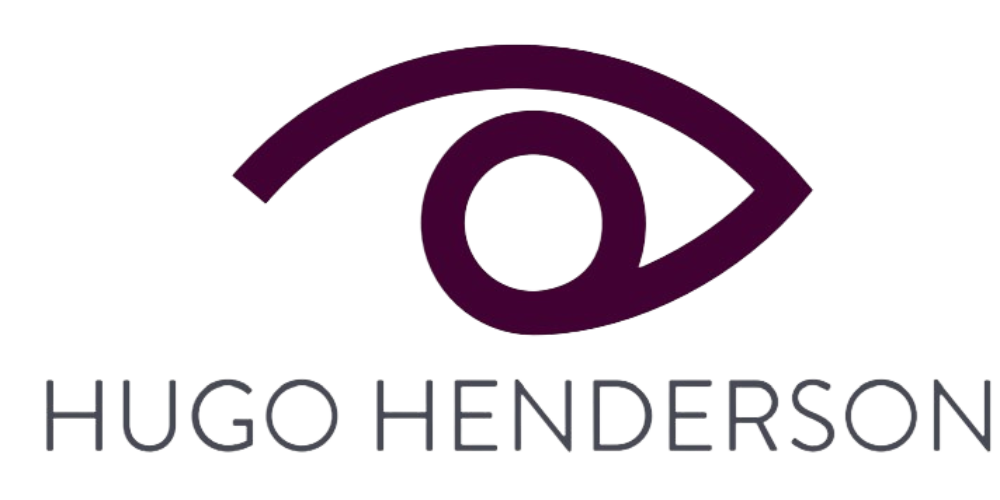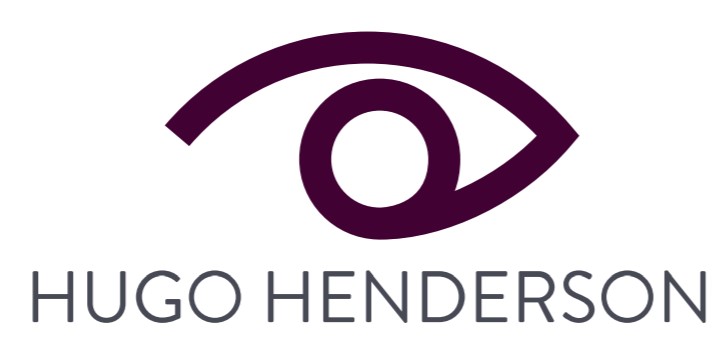Eyelid Tumours and Eyelid basal cell carcinoma
Hugo Henderson offers a comprehensive service for the diagnosis and treatment of eyelid tumours. Benign eyelid lesions can be removed at the initial consultation and lesions that have features suspicious of cancer can be biopsied to obtain tissue for a diagnosis and treatment planning. Most lumps and bumps around the eyelid are benign (not cancer) for those lesions that are cancerous such as basal cell carcinoma Mohs’ micrographic surgery performed in conjunction with a dermatology Mohs’ surgeon is often the most appropriate treatment.
What is eyelid skin cancer?
Skin cancers can affect the eyelids and adjacent face (peri-ocular skin). Usually, they appear as painless lumps often with a pearly appearance. They may become ulcerated and often go through cycles of bleeding and then crusting but never fully healing. They may distort the normal eyelid appearance. These findings need to be checked out and may require a biopsy to find out if the lump is a skin cancer.
What are the common eyelid skin cancers?
Basal cell carcinoma (BCC) or rodent ulcer is by far the most common skin cancer. 19 out of 20 eyelid skin cancers will be BCCs. They are slow growing so get bigger slowly, but they do destroy the normal eyelid in the area and so need to be treated. It is extremely rare for them to spread to distant parts of the body (metastasise). Squamous cell carcinoma (SCC). is the next most common eyelid skin cancer. They grow faster than BCCs and 1 in 20 may spread to lymph nodes in the neck and rarely to distant parts of the body. These lumps need to be spotted early and treated adequately to prevent further growth or spread. Early detection and treatment in an appropriate manner is required.
What is a Basal Cell Carcinoma?
Basal Cell Carcinoma is generally abbreviated to BCC. A BCC is also known as a rodent ulcer. It is a very slow-growing cancer of the skin that often affects the eyelids. Its growth is so slow that it virtually never spreads elsewhere in the body. However, if it is not treated it will continue to grow slowly and eventually destroy the surrounding tissue causing ulceration. BCC’s are caused by exposure to UV light and will occur on sun-exposed areas such as the face, scalp, ears, hands, shoulders and back. Fair-skinned adults are most at risk of developing BCC’s, especially if they have been outdoor workers, lived in very sunny areas or are very pale-skinned. BCC’s are commoner in people over 50 years, but a greater number of younger adults are developing BCCs because of prolonged sun exposure or sun beds.

What are the early warning signs?
If you develop a skin lesion or soreness, that fails to heal within 4 to 6 weeks and has two or more of the following features, you should seek medical advice:
• A painless lump which can appear smooth or even shiny
• An open sore or ulcer which bleeds or crusts, and does not heal.
• A red patch on the skin, which may be itchy, painful, crusty or fail to heal
• A flat or slightly raised scarred area on the skin, which is paler than the surrounding skin, making the affected skin look taught and shiny.
Will a biopsy be taken?
Sometimes a biopsy is needed to confirm the diagnosis and allow more detailed planning of the treatment. The biopsy is done in the minor operating room under local anaesthetic and will only take about 15-20 minutes. A follow-up appointment will be arranged to discuss the result with you.
How are BCC’s treated?
There are several ways of treating BCCs. The choice of treatment will depend on many factors such as the size, position and type of the BCC.
• Surgery
This is the most common form of treatment for eyelid tumours and gives the best chance of the BCC not recurring.
• Cryotherapy (freeze treatment)
Smaller BCCs can be treated by freezing them, which is a fairly simple treatment. The recurrence rate is higher than with surgery.
• Radiotherapy
This can be used for bigger BCCs but once again gives higher recurrence rates than surgery.
• Photodynamic therapy
This is a newer form of treatment that can be used for smaller BCCs.
What are the aims of surgery?
The aim of surgery is to completely remove the BCC. A small margin of normal-looking skin is also cut out to ensure that any microscopic extensions of the BCC are also removed. The next aim is to repair the eyelid in a way that allows it to function as normally as possible so that the eye remains healthy. Finally, the surgeon will try to repair the lid so that it looks as normal as possible.
How is this done?
The skin containing the lump is cut out with some normal surrounding skin (normally about 3 to 4 mm). If the BCC is very close to the edge of the eyelid, it will be necessary to remove a full-thickness piece of the eyelid to completely remove the BCC. The eyelid is then repaired generally using stitches that dissolve and do not require removal. Where possible, a small gap will be closed by stitching the wound edges together. However, if the gap is large, it may be necessary to rearrange some of the surrounding looser skin to close the gap or to use a skin graft from another area such as the upper eyelid(s) or from near the ear.
You will be told before surgery if this may be necessary. Sometimes a bolster is used to help a skin graft or flap stay in place. This is a small pad of cotton wool soaked in antiseptic and secured onto the graft with stitches. It will usually be removed after a week or so. Sometimes the moist inner lining of the eyelid needs to be replaced and a graft or flap of this can be taken from another eyelid or from the inside of the mouth or nose and used to repair the eyelid.
How can you tell if the BCC has been completely removed?
The BCC will be removed and sent to a pathologist who checks the tissue microscopically to see if the BCC has been completely removed. This can either be done within an hour if the tissue is frozen or within a few days with the more standard method. Sometimes a skin surgeon who specialises in Mohs’ micrographic surgery will remove the BCC in a special way to try to ensure its total removal. Mr Henderson works closely alongside Dermatologists in this instance.
What is Mohs’ micrographic surgery?
This is a specialised method for excising BCCs where a skin surgeon removes the BCC in layers, which are carefully examined under a microscope at the time of surgery to ensure that it is completely removed. Mr Henderson would then then repair the eyelid.
What type of anaesthetic will I have?
Most operations are done under local anaesthetic. Numbing drops are put in the eye and local anaesthetic is injected into the affected area of the eyelid. This causes stinging for 10 to 20 seconds and the lid will then be numb. The patient remains awake throughout the procedure.
Occasionally sedation can be given by an anaesthetist, which will calm and relax the patient. This helps patients who are nervous about having local anaesthetic or if the surgery will take a long time. Occasionally the surgery is performed under a general anaesthetic when the patient is asleep throughout the operation.
What precautions do we need to protect ourselves in the future from eyelid and peri-ocular skin cancers?
If you have had one BCC, it is likely that you will develop others over the ensuing years, on parts of your face, neck, shoulders and hands which are sun exposed.
- Examine your skin every 6 to 12 months for early warning signs and look and feel for any changes in your skin.
- Ask your partner to examine your back, neck, ears and scalp. Alternatively, use a mirror to examine these areas.
- If you are concerned about a lump, seek advice from your GP. · Wear protective clothing and wide-brimmed hats when outdoors, which will protect the skin most at risk.
- Wear 100% UV protective sunglasses, as the skin surrounding the eyes is vulnerable. · Avoid sunshine during mid-day hours if possible.
- Use of high factor sunscreen (SPF 15, 30 or greater) is vital. Apply sunscreen before going out in the sun and re-apply every 2 to 3 hours or more frequently if perspiring or swimming.
- Advise others, especially family and friends, to protect themselves from the sun. Once the BCC has been completely removed and there is microscopic confirmation that no tumour cells remain, reconstructive surgery is usually necessary. Occasionally the wound can be left to heal on its own.
What will happen on the day of surgery?
Before the operation, the surgeon will want to check that your lump is still present. You will be asked to sign a consent form, which will include your permission for the lump to be tested in the pathology laboratory. The lab will keep the tissue; it will not be returned to you. At the end of the operation, antibiotic ointment will be put in the eye and on the stitches. You will usually be given antibiotic drops or ointment to use three times a day until your next appointment. An eye pad will be put on your eye (unless you have no sight in the other eye). You will be told when you can remove the pad – usually after about two hours. After it is put it in the eye, the ointment may blur your vision a little for a short while
